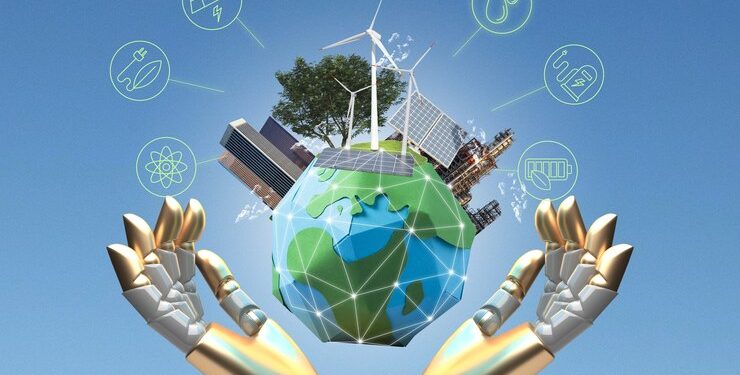Introduction
In the intricate dance between human activity and the environment, few relationships are as profound and consequential as the one between electricity and climate change. Our modern world is electrified, powering everything from homes to industries, and the methods we choose to generate this electricity hold the key to shaping the destiny of our planet. To truly understand the gravity of this connection, let’s embark on a journey into the heart of electricity generation and its intricate links to climate change.
The Carbon Trail of Electricity Generation
Electricity generation, the heartbeat of contemporary societies, has long been sustained by the combustion of fossil fuels—coal, oil, and natural gas. This method, while providing an abundant and reliable energy source, exacts a toll on the environment through the release of greenhouse gases, with carbon dioxide (CO2) at the forefront.
Fossil fuel combustion is a major contributor to the increasing concentrations of CO2 in the Earth’s atmosphere. These greenhouse gases act like a blanket, trapping heat and leading to global warming—a phenomenon we now recognize as climate change. The consequences are far-reaching, with rising temperatures, melting ice caps, and shifts in weather patterns becoming more pronounced.
Renewable Energy as the Antidote
Recognizing the urgent need to break free from the carbon-intensive cycle, a global shift toward renewable energy has gained momentum. Renewable sources, such as solar, wind, hydro, and geothermal, present a promising alternative, offering a way to generate electricity with significantly fewer carbon emissions.
Solar energy, harvested through photovoltaic panels, converts sunlight into electricity without emitting pollutants. Wind power, harnessed by turbines, taps into the kinetic energy of the wind, producing clean electricity. Hydropower leverages the energy of flowing water, while geothermal energy draws from the Earth’s internal heat. Embracing these technologies not only diversifies our energy portfolio but also addresses the root cause of climate change by curbing greenhouse gas emissions.
A Landscape of Innovation
The nexus between electricity and climate change is also a landscape of innovation. Advancements in technology continually push the boundaries of what is possible in terms of sustainable energy solutions. Energy storage technologies, like advanced batteries, bridge the gap between intermittent renewable energy generation and consistent power supply, ensuring a reliable and stable grid.
Smart grids, equipped with sensors and communication systems, optimize the distribution of electricity, reducing waste and enhancing overall efficiency. The rise of electric vehicles (EVs) represents a dual-front assault on environmental issues, reducing both emissions from transportation and dependence on fossil fuels.
Moreover, individual choices matter in this grand transition. Energy-efficient appliances, home insulation, and the adoption of smart technologies contribute to a culture of sustainability at the grassroots level. As consumers become more conscious of their energy usage, the collective impact ripples through the entire electricity ecosystem, fostering a more sustainable future.
Navigating Challenges, Embracing Opportunities
Yet, the journey to a low-carbon electricity future is not without its challenges. The intermittent nature of renewable sources requires effective energy storage solutions to maintain a consistent power supply. The aging infrastructure of existing power grids necessitates upgrades to accommodate the evolving energy landscape. Policy frameworks must be established or revised to encourage the adoption of renewable technologies and discourage the reliance on fossil fuels.
However, these challenges are not roadblocks but rather opportunities for growth and transformation. The renewable energy sector presents a fertile ground for economic development and job creation. Governments, businesses, and individuals can collectively contribute to this transition by investing in research and development, supporting clean energy initiatives, and advocating for policies that align with the goals of a sustainable, low-carbon future.
A Global Endeavor
Understanding the electricity-climate change connection requires acknowledging that this is a global challenge that demands global cooperation. The Paris Agreement stands as a testament to the shared responsibility of nations to address the intertwined issues of electricity generation and climate change. Through collaboration, information sharing, and joint efforts, countries can accelerate the transition to sustainable energy systems and collectively tackle the looming threat of climate change.
Conclusion
In the tapestry of our world, the threads of electricity and climate change are intricately woven together. As we navigate the complexities of this relationship, we find ourselves at a crossroads. The decisions we make today regarding how we generate and consume electricity will reverberate through the annals of time, shaping the world we pass on to future generations. By embracing renewable energy, fostering technological innovation, navigating challenges, and embracing global cooperation, we can illuminate a path toward a sustainable, electrified future—one where the dance between electricity and climate change is one of harmony rather than discord.




